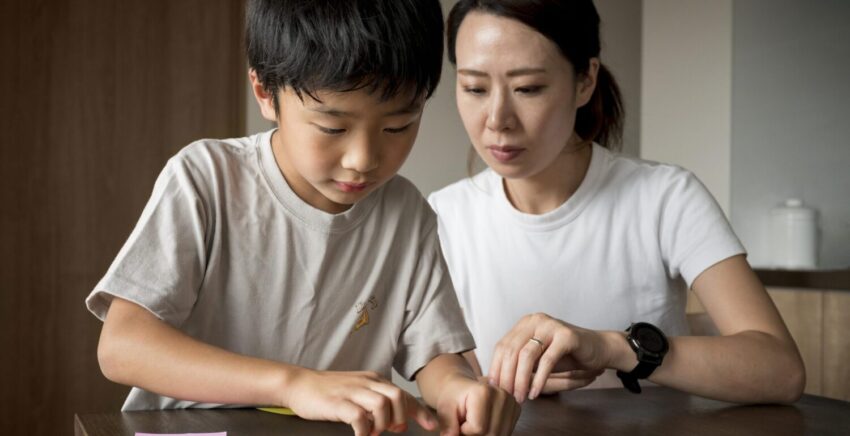When my son was diagnosed with ADHD in Primary 2, I was worried—but not just about attention or behaviour. I was especially worried about how he would survive in a top SAP school where competition was fierce and Higher Chinese was mandatory.
PSLE felt like a mountain that kept getting steeper every year. But through trial, error, and sheer persistence, we found a way forward. When he eventually scored AL7, it wasn’t just a number. It was a symbol of his resilience—and ours.
Here’s how we got there.
The Challenge of a Competitive School System
My son entered a Special Assistance Plan (SAP) school as my husband is an old boy but the pressure was real. From Primary 1, everyone seemed to be ahead. Enrichment classes, Olympiad prep, fancy tuition centres—our son was already falling behind not because of ability, but because of attention.
With Higher Chinese compulsory, we knew early on we had to do something differently.
Making Mandarin Part of Daily Life
ADHD kids struggle with classroom instruction alone—especially in languages. Chinese was tough: abstract characters, rote memorisation, oral exams.
Tuition centres like Tien Hsia, EduGrove, and HAO Chinese didn’t work for him. He couldn’t focus in group settings, and he’d tune out halfway through lessons.
So we took it into our own hands.
-
We switched from English to Mandarin at home
-
My wife, who is strong in Chinese, led the charge
-
We started watching only Chinese-dubbed cartoons—like Peppa Pig (小猪佩奇), Paw Patrol (汪汪队立大功), and SpongeBob SquarePants (海绵宝宝)
-
We read a Chinese bedtime story every night for 10 minutes
It wasn’t a miracle fix, but it became a habit. He absorbed the language passively and naturally—like how bilingual kids learn from immersion.
English Was Our Comfort Zone
Thankfully, English was never a struggle. Before he even started primary school, we had already laid the foundation and reading is his hobby and we filled our shelves with tons and tons of books, from phonics to Roald Dahl to encyclopedias
By the time he started school, his English comprehension and vocabulary were well ahead. It gave him a boost in both English and Science.
Math and Chinese Needed Special Attention
Math didn’t come naturally to him either. It wasn’t the concepts—it was the carelessness, skipped steps, and mental fatigue. We tried group tuition, but again, distractions took over.
Eventually, we switched to 1-to-1 tuition for both Chinese and Math. It was expensive—but necessary. The tutors worked with him:
-
In short, focused sessions
-
With visual aids, manipulatives, and plenty of breaks
-
At a pace that respected his learning rhythm
It was slower progress, but it was real progress.
Managing Screen Time & Promoting Movement
One of the most difficult challenges we faced was managing screen time. For individuals with ADHD, it’s crucial to limit or avoid excessive video games and social media, especially on mobile phones. These can trigger hyperfocus, impulsivity, and even addiction, often worsening sleep, anxiety, and emotional regulation.
Instead, we focused on physical activity and real-world engagement:
-
We brought him out for walks daily
-
Signed him up for swimming classes
-
Let him join a junior gym programme
-
Enrolled him in hands-on enrichment activities like robotics and science workshops
ADHD brains need to keep moving. Structured physical activity helped burn off excess energy, improve focus, and regulate mood—making study time smoother and more productive.
Home Was the Learning Haven
We made our home ADHD-friendly:
-
A quiet, uncluttered study corner
-
Visual task boards and daily planners
-
A reward system for task completion (nothing fancy—just stickers, privileges, praise)
For ADHD kids, the environment is half the battle. At school, they’re trying to keep up. At home, they need space to reset, refocus, and grow.
As Parents, We Had to Learn Too
One of the most important lessons we learned is that our child learns differently. What works for others may not work for him—and that’s okay.
As parents, we had to:
-
Let go of expectations based on other children
-
Learn to accept that he needed more hand-holding
-
Adapt our teaching, not force him to adapt to rigid methods
We used scaffolding strategies to help bridge the gap:
-
Break down tasks into smaller, manageable steps
-
Use visual guides and checklists to reduce overwhelm
-
Provide verbal encouragement at every stage of the task
-
Offer breaks and brain resets without guilt
It wasn’t about lowering standards. It was about building confidence and independence, one step at a time.
The Power of Patience and Positivity
There were breakdowns. Frustrations. Even days he cried and said, “Why am I so stupid?”
But we never let grades define him. We celebrated effort, not marks. If he completed a worksheet without rushing, that was a win. If he tried to answer in Chinese, that was a win. If he asked for a break before getting upset, that was a big win.
PSLE: A Victory Beyond Grades
When his PSLE result came—AL7—we knew it was a personal best. Not because it was perfect, but because it was earned. Every line of writing, every oral word, every multiple-choice bubble—it all took double the effort of a neurotypical student.
And he did it.
To Parents Who Are Still Struggling
If you’re walking a similar path, here’s what I want to say:
You’re not alone. Your child is not lazy or slow. They just need a different kind of support. Build a village—tutors, teachers, routines, habits—and meet them where they are.
Most importantly, see your child for who they are, not what the system expects them to be.
PSLE is just one part of the journey. But knowing how your child learns, and helping them feel seen and understood—that’s a success story you’ll never forget.
Inspired by a real journey. Names and details have been changed to protect privacy.
If you suspect your child may have ADHD, early diagnosis and a personalised learning approach can make all the difference.
